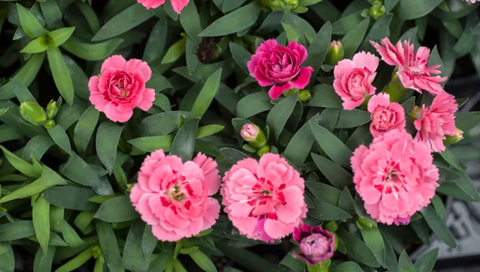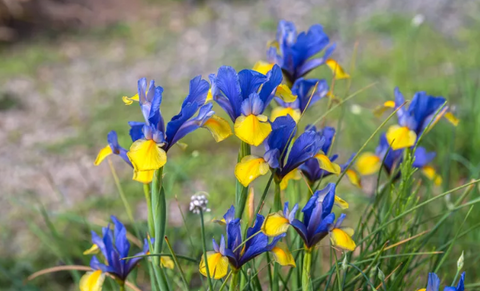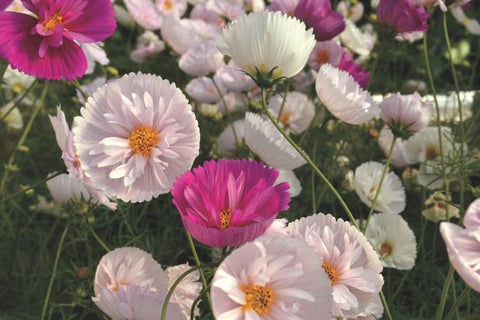As the weather warms and the days lengthen, many garden enthusiasts eagerly anticipate the opportunity to cultivate their outdoor spaces. Growing fresh produce in your garden not only provides an abundant harvest but also offers a rewarding connection to the natural world. From selecting the perfect location to preserving your bountiful harvest, this comprehensive guide will walk you through the steps to create a thriving garden oasis.

Selecting the Right Location
Importance of sunlight
The foundation of a successful garden begins with choosing the optimal location. Sunlight is the lifeblood of plants, fueling the process of photosynthesis that converts light energy into essential nutrients. Select a spot that receives ample sunlight throughout the day, ideally six to eight hours for most vegetable crops.
Soil quality and drainage
Healthy soil is the cornerstone of a flourishing garden. Assess the soil quality and drainage of your chosen site, ensuring it is well-draining to prevent waterlogged roots. Sandy loam or loamy soil with good drainage and aeration promotes robust root development and nutrient uptake.
Proximity to water source
Convenient access to a water source is vital for maintaining consistent moisture levels in the soil. Whether it's a nearby hose or irrigation system, proximity to water simplifies the task of watering and ensures plants have access to hydration during dry spells.
Choosing Your Produce
Consider climate and growing zone
Before selecting which fruits and vegetables to grow, consider your local climate and growing zone. Consult a hardiness zone map to determine which plants are best suited for your region's temperature and frost patterns, ensuring a successful harvest.
Selecting seasonal vegetables and fruits
Embrace the rhythm of the seasons by choosing produce varieties that thrive in each season. From crisp lettuce and tender peas in the spring to hearty squash and sweet corn in the summer, align your garden with nature's bounty for optimal growth and flavor.
Incorporating herbs for flavor and aroma
Enhance your culinary creations by incorporating aromatic herbs into your garden. Basil, thyme, rosemary, and mint not only add flavor to dishes but also attract beneficial insects and pollinators, fostering a healthy ecosystem within your garden.
Preparing the Soil
Testing soil pH and nutrient levels
Knowledge is power when it comes to soil health. Conduct a soil test to assess pH levels and nutrient deficiencies, guiding amendments to optimize growing conditions for your chosen crops
Incorporating organic matter and compost
Enrich your soil with organic matter and compost to improve soil structure and fertility. Compost adds essential nutrients and beneficial microorganisms, enhancing soil health and promoting robust plant growth.
Mulching to retain moisture and suppress weeds
Mulching is a multitasking marvel in the garden, conserving moisture, regulating soil temperature, and suppressing weeds. Apply a layer of organic mulch, such as straw or wood chips, around your plants to minimize water evaporation and weed competition.

Planting Techniques
Direct sowing vs. transplanting seedlings
Choose the appropriate planting method based on the specific requirements of each crop. Some vegetables, like carrots and beans, thrive when sown directly into the garden soil, while others, such as tomatoes and peppers, benefit from starting as seedlings indoors before transplanting into the garden.
Spacing and depth considerations
Give your plants room to spread their roots and grow to their full potential by spacing them according to their mature size and growth habits. Plant seeds at the proper depth to ensure germination and establishment, following recommended spacing guidelines for each crop.
Companion planting for pest control and improved growth
Harness the power of companion planting to maximize space and enhance plant health. Select companion plants that complement each other's growth habits and natural defenses, such as planting marigolds to deter pests or interplanting nitrogen-fixing legumes to enrich the soil.
Watering and Maintenance
Establishing a watering schedule
Consistent moisture is essential for plant growth and development. Establish a watering schedule based on the needs of your plants, adjusting frequency and duration according to weather conditions and soil moisture levels.
Monitoring soil moisture levels
Practice proactive plant care by regularly monitoring soil moisture levels. Use a moisture meter or simply perform a fingertip test to gauge moisture content, ensuring plants receive adequate hydration without risk of overwatering or underwatering.
Pruning and thinning for optimal growth
Promote healthy growth and abundant yields by practicing regular pruning and thinning. Remove dead or diseased foliage, as well as overcrowded or misshapen fruits, to improve air circulation and sunlight penetration, reducing the risk of pest and disease issues.
Fertilization Strategies
Understanding the role of essential nutrients
Plants require a balanced diet of essential nutrients to thrive, including nitrogen, phosphorus, and potassium, as well as micronutrients like calcium and magnesium. Understand the role of each nutrient in plant growth and development, tailoring fertilization strategies to meet specific needs throughout the growing season.
Organic vs. synthetic fertilizers
Choose fertilizers that align with your gardening philosophy and environmental values. Organic fertilizers, such as compost and fish emulsion, nourish the soil while minimizing environmental impact, whereas synthetic fertilizers provide a quick nutrient boost but may contribute to soil degradation and water pollution.
Implementing a feeding schedule
Feed your plants regularly to ensure they have access to the nutrients they need for optimal growth and productivity. Implement a feeding schedule based on plant type, stage of growth, and soil conditions, applying fertilizers at the appropriate times and rates to avoid nutrient imbalances or excesses.

Pest and Disease Management
Identifying common garden pests
Stay vigilant against potential threats to your garden from common pests and diseases. Learn to identify signs of pest damage, such as chewed leaves or stippled foliage, and take proactive measures to prevent infestations before they escalate.
Natural remedies and deterrents
Embrace natural pest management techniques to minimize reliance on chemical interventions. Introduce beneficial insects, such as ladybugs and praying mantises, to prey on pest populations, or utilize natural deterrents like neem oil or garlic spray to repel unwanted visitors.
Recognizing signs of disease and taking preventive measures
Early detection is key to preventing the spread of plant diseases. Familiarize yourself with common symptoms of fungal, bacterial, and viral diseases, such as leaf spots or wilting, and promptly remove affected plant material to prevent further spread.
Supporting Vertical Growth
Utilizing trellises and stakes for vining plants
Maximize growing space and improve air circulation by training vining plants to grow vertically. Install trellises, stakes, or arbors to support climbing crops like cucumbers, peas, and beans, reducing the risk of disease and making harvests more accessible.
Benefits of vertical gardening
Vertical gardening offers numerous benefits beyond space-saving efficiency. By lifting plants off the ground, vertical structures promote better light exposure, air circulation, and pest management, resulting in healthier plants and higher yields.
Creative solutions for limited space
Get creative with vertical gardening solutions to make the most of limited space. Explore vertical planters, hanging baskets, and tiered shelving systems to transform walls, fences, and balconies into productive growing areas, expanding your gardening possibilities in small urban spaces.
Extending the Growing Season
Cold frames and row covers
Gain a competitive edge in the garden by extending the growing season with protective structures like cold frames and row covers. These simple yet effective tools provide insulation against frost and wind, allowing you to start plants earlier in the spring and harvest later into the fall.
Utilizing hoop houses and greenhouses
Take your gardening endeavors to the next level with the addition of hoop houses or greenhouses. These enclosed structures create a controlled microclimate, shielding plants from extreme weather and extending the growing season year-round for tender crops and exotic varieties.
Planting cold-hardy varieties for late-season harvests
Embrace the resilience of cold-hardy varieties to prolong your harvests well into the cooler months. Choose vegetables like kale, spinach, and Brussels sprouts that thrive in chilly conditions, providing a continuous supply of fresh produce long after summer crops have faded.

Harvesting Your Bounty
Signs of readiness for harvest
Timing is everything when it comes to harvesting your garden bounty. Learn to recognize the telltale signs of readiness for harvest, such as vibrant color, firm texture, and mature size, to ensure peak flavor and nutritional value in your homegrown produce.
Proper harvesting techniques
Handle your harvested treasures with care to preserve their quality and freshness. Use clean, sharp tools to avoid damage and contamination, and harvest fruits and vegetables at their peak ripeness for the best flavor and texture.
Enjoying the fruits of your labor
Celebrate the culmination of your gardening efforts by savoring the fruits of your labor. Whether enjoyed fresh from the vine, transformed into delicious meals, or shared with friends and neighbors, homegrown produce nourishes both body and soul, fostering a deeper appreciation for the natural world.
Preserving and Storing Produce
Canning and preserving techniques
Extend the enjoyment of your garden harvests by learning the art of food preservation. Explore traditional techniques like canning, pickling, and fermenting to capture the flavors of summer for year-round enjoyment.
Freezing and drying methods
Preserve the peak freshness of your garden bounty with freezing and drying methods. Freeze fruits and vegetables for convenient storage and use in soups, smoothies, and stir-fries, or dry herbs and peppers for long-lasting flavor and aroma.
Storing fresh produce for maximum shelf life
Maximize the shelf life of fresh produce with proper storage techniques. Store fruits and vegetables in a cool, dark place with adequate ventilation, minimizing moisture and ethylene gas exposure to prevent premature spoilage and extend freshness.

Reflecting and Planning Ahead
Evaluating the success of your garden
Take time to reflect on the successes and challenges of the growing season. Evaluate plant performance, yield quantity and quality, and pest and disease pressure to identify areas for improvement and future planning.
Note-taking for future improvements
Keep detailed records of your garden activities and observations to inform future decisions and improvements. Note planting dates, varieties grown, and any successes or failures encountered, empowering you to make informed choices in the seasons to come.
Preparing for the next growing season
Look ahead to the next growing season with anticipation and excitement. Prepare garden beds, order seeds or transplants, and plan crop rotations and companion plantings to optimize soil health and plant diversity, setting the stage for another bountiful harvest.
Conclusion
In conclusion, cultivating a garden with fresh produce is a deeply rewarding journey that connects us to the rhythms of nature and the joys of self-sufficiency. By following the steps outlined in this guide, you can create a vibrant outdoor oasis that nourishes both body and soul, providing a bounty of delicious fruits and vegetables to enjoy throughout the seasons. Whether you're a seasoned gardener or a novice enthusiast, let the promise of spring sprouts inspire you to embark on your own gardening adventure and reap the rich rewards of homegrown abundance.









